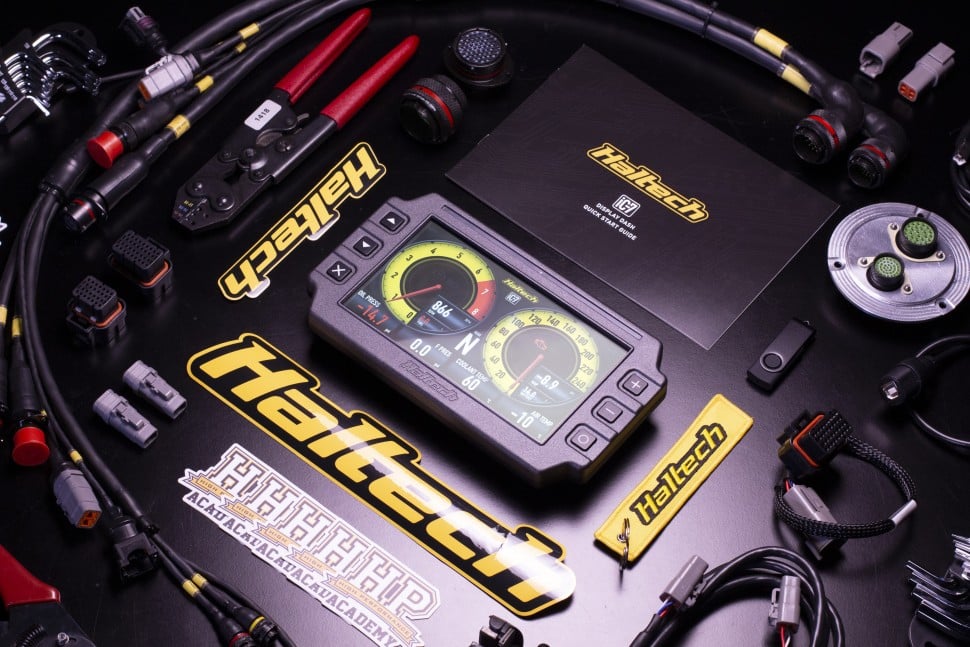| 00:00 |
While heat exchangers manage the bulk of your cooling, there are plenty of items that they don't cover.
|
| 00:05 |
Things like turbo wastegates, for example, can't be effectively cooled with a heat exchanger.
|
| 00:10 |
But if they get no airflow, they'll certainly fail with time.
|
| 00:13 |
So, it's important to consider how to cool these ancillary devices on our cars.
|
| 00:18 |
The primary mistake I see is vehicles with fully sealed radiator ducting and a sealed engine bay that results in a hundred percent of the cooling air going through the radiator, but zero percent of that air going to the engine bay.
|
| 00:31 |
What happens here is that a huge amount of heat builds up in the engine bay and there's no way for it to effectively get out and this causes a lot of premature part failures.
|
| 00:40 |
For short duration vehicles like time attack cars, the primary ancillary that needs cooling is the exhaust system.
|
| 00:47 |
For turbocharged cars, this means the wastegate and exhaust manifold into the turbo and for naturally aspirated cars this means primarily cooling the exhaust manifold.
|
| 00:56 |
We can achieve this by having a dedicated duct feeding off the hood or the front bumper with a bit of hosing attached to direct the air towards the hot parts.
|
| 01:05 |
As always though, we need a path for the air to escape out.
|
| 01:09 |
So, if we're sealing up the rest of our engine bay it's important to add some outlets for the ancillary cooling air.
|
| 01:15 |
Whether that's through the transmission tunnel to the rear of the car or exiting out another location on the hood.
|
| 01:22 |
In the case of endurance racing cars, other components fail too.
|
| 01:26 |
A really common one is the alternator and any serious endurance car should consider a dedicated duct to this part.
|
| 01:33 |
In general, we want to make sure there's a healthy amount of air circulating through the engine bay.
|
| 01:38 |
There's quite a few hot parts and we want them to all stay nice and cool.
|
| 01:42 |
Moving further rearwards, if we're running a flat floor and we have an exhaust running through the transmission tunnel or another enclosure above it, we need to keep some air flowing through this region to keep this area cool.
|
| 01:53 |
Having an inlet source, whether that's air blowing through the engine bay, a dedicated duct or a NACA style duct from under the floor, it's critical.
|
| 02:02 |
You also need a good exit strategy.
|
| 02:05 |
This may be louvers at the side of the car for a side exit exhaust or an opening at the rear of the car for a rear exit exhaust.
|
| 02:12 |
Whichever way we go, it's important that we're following the concept of air in, air out.
|
| 02:17 |
Further rearwards, the differential and gearbox also require cooling.
|
| 02:22 |
Ideally for these items, we would have dedicated heat exchangers with oil flowing through them, and we'd directly duct clean air to these items.
|
| 02:29 |
However, that's not always possible or within budget.
|
| 02:33 |
If differential temperatures are a problem, a NACA duct up from the floor can be used to feed cool air to the differential.
|
| 02:39 |
We just need to try and make sure that this air exits over the top of the diffuser towards the rear of the car.
|
| 02:45 |
The combinations of all these secondary cooling flows running along the centerline of the car with a flat floor means that generally we'll end up with quite a large hole above our diffuser to vent them all out.
|
| 02:56 |
That's fine, but in most cases what we want to do is build a vertical wall on either side of our diffuser that keeps low energy cooling flows on top of the diffuser and doesn't let them roll around the sides to inside the diffuser where they'll hurt performance.
|
| 03:10 |
Let's summarize what we've covered in this module.
|
| 03:13 |
While heat exchangers manage most cooling needs, additional components like turbo wastegates, exhaust manifolds and alternators also require airflow to prevent overheating.
|
| 03:23 |
A common mistake is a fully sealed radiator ducting that leaves the engine bay with no airflow, causing heat buildup and part failures.
|
| 03:32 |
Ancillary cooling can be achieved with dedicated ducts and an efficient air-in, air-out strategy, ensuring outlets for the hot air to escape, whether through transmission tunnels or hood exits.
|
| 03:43 |
For rear components like differentials and gearboxes, NACA ducts or other airflow systems should be used to direct cooling air efficiently and avoid negatively impacting diffuser and floor performance.
|





